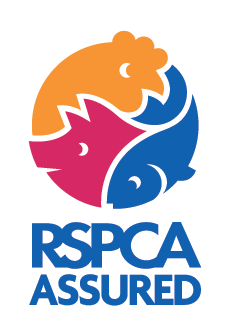Farmed animal transportation and slaughter
Transportation of livestock
The transportation of any animal can cause distress and suffering. This is why RSPCA standards specify that all farm animals should be slaughtered as close as possible to their point of origin and that the journey times for terrestrial animals must not exceed eight hours.

Stunning and slaughter
While the majority of us continue to consume meat, eggs, fish and dairy, animal slaughter is an unpleasant but inescapable reality of food production.
There are two aspects to the slaughter process: stunning and killing. Any personnel involved in the slaughter process need to be thoroughly trained and competent.
Stunning renders an animal unconscious, meaning they are unable to experience pain or distress. UK regulations require animals to be stunned before slaughter, although an exemption does exist where animals can be killed without first being stunned if this is being carried out in accordance with religious rites. All animals on RSPCA Assured farms must be stunned prior to slaughter using one of the methods listed below.
Large animal stunning
Penetrating captive bolt
Species: cattle, sheep and pigs.
A penetrative captive bolt fires a retractable metal bolt into the animal’s skull, causing the animal to lose consciousness immediately. This must always be followed by bleeding as quickly as possible.
Electrical stunning
Species: sheep, calves and pigs.
Electrical stunning uses a large pair of tongs on either side of an animal’s head to pass a current through the brain, causing immediate loss of consciousness. This can be followed by a secondary current that passes through the heart which kills the animal through cardiac arrest. As the animal is already unconscious at this point, they do not experience pain from the second current.
Bleeding
Poultry Slaughter
Gas killing of poultry
The majority of poultry slaughtered in the UK are killed through exposure to gas. This method has a major welfare advantage as the birds remain in their transport crates and do not have to be individually handled. There are different methods of gas slaughter systems in use in the UK, but all systems must ensure that the birds remain in the gas mixture long enough to be killed, not just stunned.
Electrical waterbath stunning
When a waterbath is used to kill poultry, birds must be individually handled and placed into restrainers where they are hung upside down by their legs on metal shackles that move along a conveyor system. Birds are then automatically moved along the production line to the waterbath, where they must be submerged up to their wings for a minimum of 4 seconds. As soon as the bird’s head makes contact with the water, an electrical current will either stun or kill the bird, depending on the system. If the system is set to stun birds, they must be killed without delay (The RSPCA welfare standards require birds to be killed within 10 seconds of exit from the waterbath). The RSPCA is committed to phasing out inverted shackling systems, and these are currently only allowed under strict conditions of use.
